WELCOME TO ST. ELIZABETH PASTORATE
St. John the Evangelist
Church – Placid
We serve the Catholic community by offering resources and teaching that support faith formation for children and the people who guide them.
Welcome to St. John the Evangelist
Church – Placid
St. John the Evangelist Church – Placid
Introduction
When a community remains undisturbed by industry for decades and is still that way going into the twenty-first century, it is often hard to tell the story of its history unless there is a common thread that binds the years together. Because of its calm and serene surroundings, it only seems fitting that the common thread of Placid is faith, led by priests, and bound together by generations of families. Placid history lies in the lives of those priests, past and present, who built the foundation, and the many parishioners who nurtured that foundation to maintain this faith community.
There are two recorded stories how Pleasant Grove became Placid. The first story stated the logical: the area received its name because it was so peaceful and serene. Yet another, more consistent and popular story, was that this settlement was named for Fr. Placid, a monk of the New Melleray Monastery. However it came about, members of this community answer to Pleasant Grove, Placid or St. John Parish, rural Epworth. And so the story begins in Pleasant Grove.
1874 In the Beginning
In 1874, even before ecumenism was heard of, Mr. Edwin Horsfield introduced it into the Pleasant Grove community. Because there was no church in those days, neighbors gathered to celebrate Mass in the home of Mr. Horsfield, a non-Catholic. As the number of Catholics grew, the community became a congregation. A Protestant neighbor, known only as Mr. Hooper, donated a two-acre plot of land to the archdiocese. In 1874, Fr. John Hawe was given the challenge of building a church on the donated plot, and the honor of serving as its first pastor.
The first priests of Pleasant Grove stayed at the home of Edwin Horsfield. After the church was built, Mr. Horsfield became Catholic and donated the stations and a beautiful window that was placed over the main altar. Christmas services were held in the new church in 1874 for the parish of fifty families. Fr. John Hawe remained with the church community until 1876 when Fr. Michael Meagher succeeded him until 1877. Fr. Michael ODonnell served the parishioners for the next year and a half. He remained until his death at age twenty-eight after a long illness.
1879 -1930 The Growing Years
The next twenty-one years had its ups and downs under the leadership of Fr. James Commerford. Great things were accomplished, only to see some of them destroyed. It was during this time that Fr. Comerford named the community Placid, in honor of Fr. Placid, a monk of New Melleray Monastery.
Archbishop Hennessey ordered a church to be built at Epworth before a rectory could be built at Placid. With less than a dozen Catholics there, the previous priests had given it up as a hopeless assignment. But with only three families in Epworth, Fr. Comerford met the challenge and built a church there. From that time on, the Placid parish priest also accepted the added responsibility of the Epworth mission. Fr. Comerford continued his great endeavors with the building of the first rectory at Placid in 1879.
Tragedy struck this growing community on March 19, 1885. From beyond the hills the billowing smoke could be seen from miles away. The Placid church was burning down. But the parishioners came together to rebuild their church.
Many of the parishioners donated $100.00 toward the erection of the new church. Bishop John Hennessey, assisted by Fr. Ryan, laid the cornerstone. An organ that had been raffled off by the monks of the Monastery, and won by 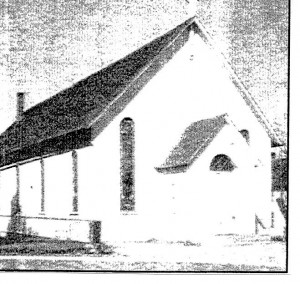 Mary Jennings of Farley was donated as the first organ of the new church.
Mary Jennings of Farley was donated as the first organ of the new church.
In 1886 the rural cemetery was opened and Mr. Horsfield was given the honor of buying the first lot. Many other milestones were reached in the years that followed as the parish community continued to grow.
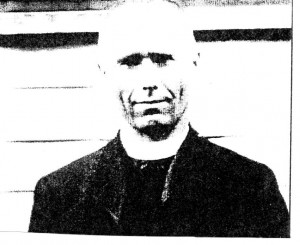 On December 21, 1891, Edwin Horsfield’s son, John, was ordained a priest. Fr. Horsfield celebrated his first Mass of Thanksgiving on December 25, 1891.
On December 21, 1891, Edwin Horsfield’s son, John, was ordained a priest. Fr. Horsfield celebrated his first Mass of Thanksgiving on December 25, 1891.
The Sisters convent-school was completed in 1894. The Sisters of the Third Order of St. Francis of the Immaculate Conception in Clinton joined the community, and St. John School was opened in November of that year under the charge of the Franciscan Sisters, who remained until 1912. On January 11, 1899, a post office was established in the rectory. Mail was brought each Sunday from Epworth and distributed on Sunday mornings. It remained in operation until the beginning of the Rural Free Delivery on November 4, 1902.
The parishioners said farewell to Fr. James Comerford in 1900 and welcomed Fr. John Brogan as his successor. The most colorful pageantry that took place during Fr. Brogan five years at Placid came in 1901 with the visit of Archbishop John Joseph Keane who came to administer the sacrament of Confirmation. One hundred twenty-five men assembled in Epworth on horseback to meet the archbishop at the train and accompany him in procession to St. John Church.
Fr. Patrick McNamara spent the next twenty-five years ministering to the parochial needs of Placid and the Epworth mission after the departure of Fr. Brogan. It is recorded that he led a quiet an exemplary life that was far better received by the parishioners than any sermon he ever preached in church. It was during Fr. McNamar’s time that Placid copied Peosta parish by holding an annual pig day when each parishioner gave a porker to support the church. In 1935 a cartoonist created a cartoon on pig day and inserted the following poem:
O, Mother, it pigs day in Placid
And how I would long to be there;
There a little white church with no bell on
And a big tall priest to take care.
He been doing the preaching and praying
And most of the chores this fall,
And these little pigs do the grunting
And have to pay for it all.
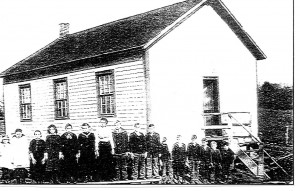 When the Franciscan sisters left in 1912, lay teachers administered to St. John School for the next five years. The school remained ecumenical, as it was a mixed parochial and public rural school for years. The Clinton Franciscans returned in 1917 to serve the parish school for another twenty-nine years.
When the Franciscan sisters left in 1912, lay teachers administered to St. John School for the next five years. The school remained ecumenical, as it was a mixed parochial and public rural school for years. The Clinton Franciscans returned in 1917 to serve the parish school for another twenty-nine years.
About this time a little white schoolhouse was moved from Clinton to Placid that housed the upper four grades. Each family in the parish took weekly turns giving the sisters rides and supplying them with food. In September 1930, Fr.Mathias Meyerhofer replaced Fr. McNamara as pastor.
1930 – 1959 The Improving Years
Fr. Meyerhofer’s toughest mission was to pilot the parishioners through the Great Depression with full speed ahead. They weathered the storm and life in Placid remained pleasant. Throughout his five years, Fr. Meyerhofer is credited with improving the church property, repairing the church, and improving the cemetery. It appeared there wasn’t enough work in Placid for the indefatigable Fr. Meyerhofer. In 1935, he was sent to Epworth to make the mission a parish with a resident pastor. From that time on the pastors of Placid no longer had the added responsibility of the Epworth mission.
Not much is recorded for the many priests who served St. John Parish from 1935-1959. From 1935-1946 Fr. William Holub ministered to the needs of Placid. He is probably best known for writing articles for the Cascade Pioneer-Advertiser. He is also the author of On the Humor Side.
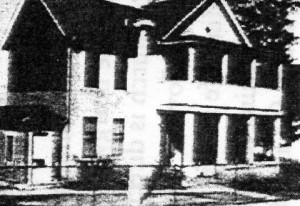 Fr. J. Robert McDonald’s two years (1946-1948) at Placid brought many improvements to the rectory, a new septic tank for the school, an oil-burning furnace and kneeling pads for the church. In the seven years that followed, Fr. Aloysius D. Gibbs began collecting funds for the new church facilities that parishioners desired. A total of $18,000 was collected. During this time extensive remodeling was done to the convent in the amount of $4000.00.
Fr. J. Robert McDonald’s two years (1946-1948) at Placid brought many improvements to the rectory, a new septic tank for the school, an oil-burning furnace and kneeling pads for the church. In the seven years that followed, Fr. Aloysius D. Gibbs began collecting funds for the new church facilities that parishioners desired. A total of $18,000 was collected. During this time extensive remodeling was done to the convent in the amount of $4000.00.
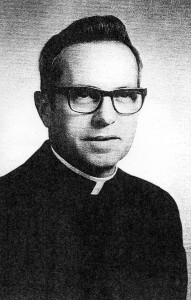 It was also during Fr. Gibb’s residency that Tom and Katie McDermott’s son, Phil was ordained to the priesthood on June 6, 1953.
It was also during Fr. Gibb’s residency that Tom and Katie McDermott’s son, Phil was ordained to the priesthood on June 6, 1953.
Fathers Conrad R. Schallau, Richard A. Bohr, Raymond Duggan, and Nestor B. Goedken kept the parish going for the next four years until Fr. Robert L. Kalb took up residence in 1959.
1959-1967 The Rebuilding Years
On December 1, 1960 two eighth grade boys, Frank Then and Tom Koopmann, reported to their teacher that smoke was coming from the church roof. The seventy-five year old structure was reduced to smoking ashes in less than two hours. Fr. Kalb arrived from Cascade only in time to see the Sisters from the School saving the Blessed Sacrament and some of the vestments from the burning church. Fire once again claimed the center of the Placid community. This is the second time the church went down in flames.
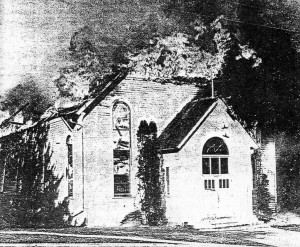 Headlines in the December 8, 1960 edition of the Cascade Pioneer-Advertiser read: St John Church Placid burned, and Future plans of country parish undecided at this publication. There was a question in the minds of others as to whether or not the church should be built again, but the roots of the people go as deep as any of the trees in the pleasant groves around Placid. There was no question in the minds of the members of St. John Parish. While they faithfully attended church services at St. Patrick in Epworth during the interim, they were busy making plans to rebuild their own church in Placid. When Fr. Kalb returned from retreat in April 1961, a committee of parish members presented him with $34,000 in cash and a large number of pledges to rebuild the church.
Headlines in the December 8, 1960 edition of the Cascade Pioneer-Advertiser read: St John Church Placid burned, and Future plans of country parish undecided at this publication. There was a question in the minds of others as to whether or not the church should be built again, but the roots of the people go as deep as any of the trees in the pleasant groves around Placid. There was no question in the minds of the members of St. John Parish. While they faithfully attended church services at St. Patrick in Epworth during the interim, they were busy making plans to rebuild their own church in Placid. When Fr. Kalb returned from retreat in April 1961, a committee of parish members presented him with $34,000 in cash and a large number of pledges to rebuild the church.
This left no doubt in anyone’s mind. Archbishop Leo Binz, after this show of enthusiasm and ability to support a parish, granted permission on May 16, 1961, for the rebuilding of St. John Church and grade school. The fifty-five families of Placid at that time averaged a financial contribution of $1000 per family. The heart of their labor contribution of themselves was far more important than the financial contribution. Michael Urbain was Trustee, and together with the parishioners they rebuilt the new church.
 Monsignor John Mayer officiated the ground breaking ceremony on July 16, 1961. It is recorded that 103 men came together on August 28, 1961 to lend their talents and efforts in pouring the foundation. Through dedication and many hours of hard labor, estimated between 13,000 – 14,000 hours, the new St. John Church was erected. It included the church, library, three classrooms, parish hall, all-purpose rooms, kitchen, Sister’s office, rest rooms, boiler room and storage areas.
Monsignor John Mayer officiated the ground breaking ceremony on July 16, 1961. It is recorded that 103 men came together on August 28, 1961 to lend their talents and efforts in pouring the foundation. Through dedication and many hours of hard labor, estimated between 13,000 – 14,000 hours, the new St. John Church was erected. It included the church, library, three classrooms, parish hall, all-purpose rooms, kitchen, Sister’s office, rest rooms, boiler room and storage areas.
You, the parishioners of St. John Parish, Placid, and your pastor, Fr. Kalb, are to be highly complimented in the erection of this beautiful church which will keep the Savior in your midst, so spoke the Rt. Reverend Msgr. J.F. Mauer of Cascade at the Cornerstone Laying Ceremony on April 15, 1962. Many items pertaining to the year were placed behind the cornerstone. On the face of the stone this inscription appears: St. John Church 1961.
Because the tabernacle ensconced in the altar of the frame church was valiantly removed during the 1960 fire, it seemed only proper that this tabernacle should be made the repository for the Blessed Sacrament in the new church. Donated years ago by the late James C. McDermott in memory of his wife, the tabernacle still gave an appearance of newness. The altar in the new church was a gift from the Sisters of Clarke College, Dubuque. Fr. Phil McDermott presided at the first Mass offered in the new church on May 4, 1962.
Fr. Kalb’s words to his parishioners spoke of a parish of strength, love, loyalty and support. You have every reason to be proud of your accomplishment; it would be hard to find a more liberal spirit than that found here at Placid. Fr. Kalb continued to serve the people of Placid until 1967.
1967 – 1988 The Transformation Years
Fr. James K. Cassidy filled the post left by Fr. Kalb from 1967-1969. The next five years brought a total of four priests to the parish for short periods and little is recorded of their time spent at Placid. It was in 1968 that St. John Placid joined with St. Patrick Epworth and St. John Peosta to form the Epworth-Peosta-Placid (EPP) Catholic School System. Students from Placid went to attendance centers at Epworth and Peosta.
The 1969 Annual Report for St. John Church Placid lists three priests who served the parish after the departure of Fr. Cassidy: Fr. Stanley Hayek until July, Fr. Vincent Jestice until October when Fr. Dean Walz arrived. Fr. Walz’s years at Placid must have been relatively quiet as nothing is reported during those two years. Although his parting words to the people of Placid in September 1971 reflect the impact the community made on him, “I truly hope that every parish in the archdiocese will one day become what I have found you to be, a community of faith and love.”
Many transformations, both spiritually and physically, began to take place in the Placid community under the leadership of Fr. Carl Schmitt who served the parish for eleven years while also serving as the Coordinator of the Dubuque Metropolitan System of Catholic Education. Fr. Schmitt’s first major undertaking was establishing a Parish Council for Placid to strengthen the faith community. Their first meeting was held in April of 1972.
Physical transformations began to take place in 1972. The old one-room school house was removed along with its foundation, and the softball field was developed on the site in 1973. It was in that year that the picnic shelter and enclosed garage were constructed and the parish convent was divided into two apartments.
 Two years later a new rectory was begun and completed in 1976. Construction was under the direction of Michael Urbain, and once again all the labor was donated by the parishioners with the exception of the foundation and masonry work.
Two years later a new rectory was begun and completed in 1976. Construction was under the direction of Michael Urbain, and once again all the labor was donated by the parishioners with the exception of the foundation and masonry work.
Several donations and memorials were bestowed to St. John Church in 1980. The parish marker was built as a memorial to Calvin McDermott, and the new cemetery gates were designed and installed through a donation by Mr. and Mrs. Matt Carroll. The solid oak bookracks in the church pews were given as a memorial by Tommie and Terri Smith, and Bill Ostwinkle donated a ceremonial flag and stand. Parish activity continued through Fr. Schmitt’s last year at Placid. The parish convent was sold for $1500 to be dismantled and removed while renovations were made to the church, school, and cemetery.
Fr. James Goedken arrived in the fall of 1982 to serve the parish for three years while he taught at Beckman High School in Dyersville. During his time at Placid, Fr. Goedken spoke highly of the successes of the parish breakfasts and picnics, the softball tournaments, the Halloween dances and the kids Christmas parties.
Fr. Goedken’s time at Placid can best be described using his own words from the 1983 annual report. During this year I have witnessed great generosity on the part of many people; the deck on the rectory was replaced by volunteer help, the Cemetery and church grounds were practically manicured by parish workers, the Ladies Guild kept the church and school buildings looking sharp as well as cleaning and painting the rectory, the Liturgy Committee and parish choir have been working tirelessly to continually improve our liturgy. Some people even showed up to plant a garden in the backyard of the rectory, then stood by helplessly whilst the pastor devoured most of the produce. The Catholic grade school is going great and our students are achieving well, and this wouldn’t be as successful as it is without huge gobs of generosity.
Upon the departure of Fr. Goedken, the Educational Development Officer of the Archdiocese, Fr. John O’Connor, took up residence in Placid until 1988. In 1987 the Archdiocese of Dubuque celebrated 150 years as a diocese, one of the first dioceses West of the Mississippi River. Fr. O’Connor described this year as marking 113 years of worship, prayer, sacrifice and tears in this corner of Dubuque County. For this parish, this fiscal year was a special anniversary and milestone since it was the silver jubilee of the present Church and School. It was another chapter in history in the service of the Lord.
Fr. O’Connor’s farewell words to the people of St. John were: “I have truly been edified by the way the members of the parish care for their church property and the cooperation that you give in times of need. This is truly a community that is a community.”
In July 1988, Fr. O’Connor moved on to St. Joseph Parish in Key West. Fr. Joe Hauer was assigned as pastor in addition to duties in the Archdiocesan Center. With the building of a new church in Peosta, the Placid attendance center for two grades of the EPP Catholic School was closed and the grades moved to the Peosta Center. In 1995-96 the EPP system reconsolidated with the Farley-Bankston School to form a new five parish consolidated Catholic School under the patronage of St. Elizabeth Ann Seton. This reconsolidation will hopefully assist in maintaining the presence of elementary Catholic Education in our parish for years to come.
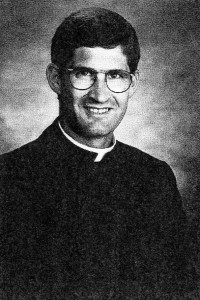 The parish celebrated the ordination of its third native son to the priesthood, Thomas J. McDermott on May 24, 1997. He celebrated his first Mass of Thanksgiving at St. John Church on Sunday, May 25. In October of 1997, Jerry Koopmann completed the Permanent Diaconate Formation and became the first parishioner ordained for service as a deacon. During this same time four parishioners completed the lay ministry formation program.
The parish celebrated the ordination of its third native son to the priesthood, Thomas J. McDermott on May 24, 1997. He celebrated his first Mass of Thanksgiving at St. John Church on Sunday, May 25. In October of 1997, Jerry Koopmann completed the Permanent Diaconate Formation and became the first parishioner ordained for service as a deacon. During this same time four parishioners completed the lay ministry formation program.
One of the main improvements was the redecoration of the worship space. People donated the altar, ambo, baptistery, reconciliation room, loud speaking system, and vestments as memorials to loved ones. Other improvements included starting a pre-school religion class, establishing a video and book library, and completing various building and ground projects. Other changes included the formation of an Art & Environment Committee, the annual Valentine Mass and dinner, music at every Mass, and an increasing number of parishioners participating in the liturgies. During this time the parish also celebrated its 125 years as a parish in 1999.
The past 11 years have been years of challenge as the parish has begun to deal with the declining number of clergy and the reality that the successful parish of the future will be one that has animated and involved lay leadership. During his twelfth year at Placid, Fr. Hauer went on sabbatical. During that 6 month period, Fr. Ron Freidel was administrator of Placid as well as pastor of St. Patrick Epworth.
When Fr. Hauer left in 2000, Placid clustered with St. Patrick in Epworth and became the Epworth-Placid Cluster. Fr. Ray Burkle became pastor of both parishes. In 2007, we again clustered and became the St. Elizabeth Pastorate, which included the parishes of St. Clement Bankston, St. Patrick Epworth, St. Joseph Farley and St. John Placid. St. John the Baptist became part of the St. Elizabeth Pastorate in 2012.
Placid has always taken ownership for the maintenance and upkeep of their buildings and grounds. Volunteers mow the church and cemetery grounds and also take care of snow removal in the winter. Ladies from the Altar & Rosary Society rotate cleaning the church every week. There is a work day scheduled every spring and fall to take care of maintenance, cleaning, and grounds. The Placid ladies are also known for their pies. Twice a year the ladies gather to make pies for the annual auction and fish fry. This is a great way to build community as well as provide funds for the mission of the parish.
Presently the St. Elizabeth Pastorate consists of five parishes under the leadership of Fr. Michael Schueller with the help of Fr. Scott Boone, sacramental priest (arriving in 2021). Father Schueller’s gifts of leadership, administration, and counseling brought many needed changes to the pastorate. Fr. Schueller was assisted in the past with sacramental priests, Father John Haugen and Fr. Phil Kruse.
What does the future hold for Placid? Through the decades many pastors have described Placid as a parish of generous, supportive, hardworking, and caring individuals. As we face the future and our greatest challenge of the new millennium, will we as individuals remain loyal to our parish, continue to participate in liturgy and parish functions, continue to sacrifice and support our church? Will the parish of St. John Placid continue to be a community of faith and love? The answer to those questions lies within each and every one of us.
Placid History compiled by Judy Then
Updated by Joann Koopmann
Parish Council Members
- Melissa Casey (2023)
- Scott Kennedy (2023)
- Brent Koopmann (2023)
- Luke McDermott (2021)
- Jeanita Grebner (2022)
- Cherie Kennedy
- Geri Kalb
Altar & Rosary
- Molly Brehm
- Jolene Zimmerman
Liturgy Committee
- Jan Connolly
- Gayle Ernst
- Kari Feldmann
- Liz Flaherty
- Joann Koopmann
- Janice Krapfl
- Karen Loney
- Donna Strief
St. John the Evangelist, Placid Hall Rental
1-49 people $ 60
50-99 people $110
100-149 people $160
150-199 people $210
200-250 people $260
($150.00 deposit)
Contact Janice Krapfl at 563.876-5589 to reserve the hall.
Cemetery Board
Steve McDermott 563-599-7678
Fred Urbain 563-258-2188
Cemetery Guidelines
- Please contact the cemetery board through the St. Elizabeth Pastorate Office at 563-876-5540 with questions or concerns or to purchase lots.
- Headstones must follow local guidelines. Prior approval from the cemetery board must be sought before a headstone may be placed on the grave site.
- No planting of permanent trees, shrubs, bushes, etc. or any other types of landscaping without prior approval from cemetery board.
- Decorations are allowed year-round if set directly on the headstone or cement foundation. Please place items at your own risk. Cemetery board does not monitor the grounds and cannot be responsible for any lost, stolen, or damaged items.
- Flowers or decorations not attached to monuments may be placed on grave during the following approved holidays: Easter, Memorial Day, Independence Day, Labor Day, All Souls Day and Christmas Day. These decorations may stay up for one week prior and one week past the holiday.
- Any decorations placed directly in the ground may not go beyond a 10-inch radius of the headstone during the approved holiday decorating times. All decorations must be removed at proper times. Items not removed will be discarded.
Shepherd hooks are to be placed in the cement foundation if it is to be a permanent decoration, only one per headstone, and not more than 4 feet high. - If you have a special occasion (birth date, anniversary) and wish to place additional decorations during a non-approved holiday time, please speak to the cemetery board prior to the date for consideration.
- Without notice, cemetery board reserves the right to prohibit or remove from lots or graves, any articles that are dead, faded, broken, create a safety hazard, cause additional maintenance burdens, or any articles not given proper prior approval.
St. John Placid June 2024 Finance Report
St. John Placid May 2024 Finance Report
St. John Placid April 2024 Finance Report
St. John Placid March 2024 Finance Report
St. John Placid February 2024 Finance Report
St. John Placid January 2024 Finance Report
St. John Placid December 2023 Finance Report
St. John Placid November 2023 Finance Report
St. John Placid October 2023 Finance Report
St. John Placid Sepetember 2023 Finance Report
St. John Placid August 2023 Finance Report
St. John Placid July 2023 Finance Report
St. John Placid 2022-23 Annual Report
St. John Placid June 2023 Finance Report
St. John Placid May 2023 Finance Report
St. John Placid April 2023 Finance Report
St. John Placid March 2023 Finance Report
St. John Placid February 2023 Finance Report
St. John Placid January 2023 Finance Report
Altar & Rosary Chairs 2023-2024
Molly Brehm
Jolene Zimmerman
Prayer Request
may we pray for you?

Fr. Michael Schueller
Pastor
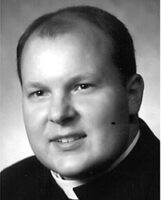
Fr. Scott Boone
Sacramental Priest
OUR MISSION
Remembering always that our main mission is to proclaim the Gospel to all, the St. Elizabeth Pastorate parishes seek to support the vitality of all its member parishes. The St. Elizabeth Pastorate’s mission is to nurture the Catholic faith among all parishioners, while respecting the individuality of all member parishes.
St. John the Evangelist Church, Placid
(563) 876-5540
Address
22481 East Pleasant Grove Road
Epworth, IA 52045
United States
